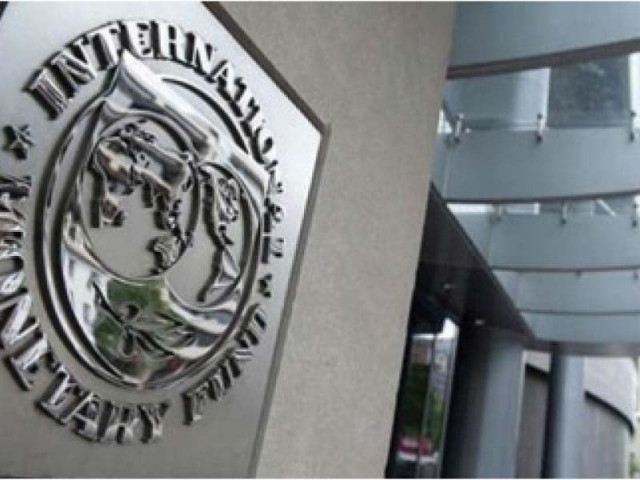Talks with IMF to begin soon
They will lead to uninterrupted flow of loans

Pakistan received $8.1 billion in loans in the past six months on the back of International Monetary Fund’s (IMF) stamp, as Finance Minister Dr Shamshad Akhtar said on Thursday that talks with the global lender were about to begin for an uninterrupted flow of foreign loans.
“No bilateral creditor will pay you nor any multilateral agency will take risk on Pakistan without the IMF programme,” said the finance minister. She added that due to poor credit ratings, Pakistan had also been priced out of the international capital market.
“We are about to enter into negotiations with the IMF for the third loan tranche (of $1.2 billion) but the IMF team may come a bit later,” she said.
The minister explained that the IMF mission would wait for finalisation of data for October-December 2023, which would be done by the end of the current month. But “we can start negotiations virtually.”
The Express Tribune reported on Wednesday that Pakistan had requested the IMF to dispatch a mission for the last loan tranche of $1.2 billion under the second review of the $3 billion package.
Data reported by the Economic Affairs Division and the central bank showed that Pakistan secured $8.1 billion in foreign loans during the first six months of the current fiscal year, which was equal to one-third of the revised annual requirement.
Pakistan has also secured $5 billion worth of rollovers from Saudi Arabia and the United Arab Emirates (UAE), taking total external inflows to $13.1 billion, or 52% of its needs.
The country received those loans in the shape of budget support, balance of payments and project financing. In December alone, Pakistan received $1.6 billion after the IMF reached a staff-level agreement.
As a result, the gross foreign exchange reserves held by the central bank jumped to nearly $9 billion.
The finance ministry remained unsuccessful in getting foreign commercial loans during the six months. The annual budget estimate of commercial loans stands at $4.5 billion.
“People are asking me to raise debt from foreign capital markets but I cannot take expensive loans,” said Akhtar.
The only opportunity to improve the foreign inflows was the successful completion of first review and it was probably less noisy talks, she added.
Akhtar said that Pakistan’s debt increased sharply in the last 10 years and the country had breached the Fiscal Responsibility and Debt Limitation (FRDL) Act since 2013.
She added that the debt structure had numerous complexities that should be worked out between Pakistan and its creditors. With limited buffers, even moderate shocks could increase debt distress.
Pakistan’s former central bank governor told Reuters on Thursday that the IMF faced tough choices on how to deal with Pakistan after the February 8 general elections and how to assess the debt situation.
Read Pakistan receives $700m tranche from IMF as UAE rolls over $2b loan
“The IMF will have to decide whether to pull the plug on Pakistan or not, and by that I mean it will have to decide about its assessment of debt sustainability,” said Reza Baqir, Head of Sovereign Advisory Services at Alvarez & Marsal.
The IMF labeled Pakistan’s debt as sustainable, but also emphasised the significant and pronounced risks, said Baqir, adding “that’s almost like having it both ways.”
Finance Minister Shamshad Akthar also spoke about the role of the Special Investment Facilitation Council (SIFC).
“International financial institutions tell me how you can live in the same room with SIFC and my reply is that the SIFC is a blessing in disguise,” she said.
Akhtar added that the SIFC leadership’s conduct was outstanding but the IMF and World Bank said that the SIFC had no business in running the government.
She criticised past governments for not doing enough for the country. “All our good people are leaving the country because of hopelessness,” she said.
“I am a believer of democracy but people do not get food with democracy, as food requires better economic management.”
Akhtar stressed that the successful implementation of comprehensive stabilisation measures helped to revitalise the economy, placing it back on a positive growth trajectory.
The economy was showing signs of recovery as in the first quarter the economy rebounded to 2.13% after two successive quarters of contraction in FY23, she added.
The growth in agriculture and industrial sectors of 5.1% and 2.5% has led to the recovery. Crops have posted a healthy growth of 6.1% primarily due to double-digit growth in important crops.
When the caretaker government took office in August 2023, Pakistan’s economy was in a tailspin with a free falling currency, runaway inflation and markets in turmoil, said Akhtar.
According to the World Bank, the poverty rate increased to 40% in 2023 with 95 million living below the poverty line. There has been an increase of 12.5 million in the last year alone due to rising unemployment. She feared that unofficial estimates suggested that the poverty level was even higher.
Large fiscal and trade deficits over two decades weakened the debt position, with the cost of servicing debt rising to three-fourths of the FBR revenue in the last fiscal year, she added.
The inability to reform has caused huge losses to the economy and Pakistan has been left behind by our neighbors on all key indicators. In terms of per capita income on purchasing power parity index, Pakistan with $4,000 per capita stood ahead of India $2,800 and Bangladesh $2,300 in 2003. However, two decades later, India with $7,500 and Bangladesh at $7,100 have raced ahead of Pakistan’s $5,500 per person income, she added.
Published in The Express Tribune, January 19th, 2024.
Like Business on Facebook, follow @TribuneBiz on Twitter to stay informed and join in the conversation.


















COMMENTS
Comments are moderated and generally will be posted if they are on-topic and not abusive.
For more information, please see our Comments FAQ